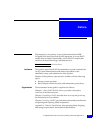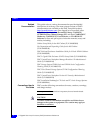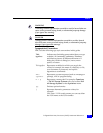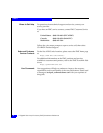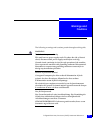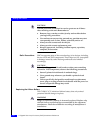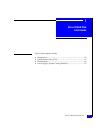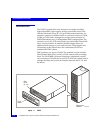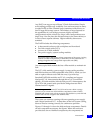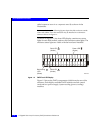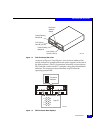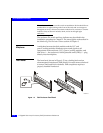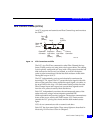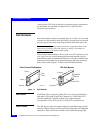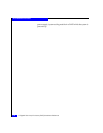
Introduction
1-3
About DAE2 Disk Enclosures
Any DAE2 can support up to fifteen 3.5-inch disk modules. Simple
serial cabling provides easy scalability. You can interconnect as many
as eight DAE2s to Fibre Channel loops (sometimes called busses) to
form a large disk storage system. The number of loops depends on
the capabilities of your storage processor; highly available
configurations require at least two loops, other configurations use a
single loop. You can place the disk enclosures in the same cabinet, or
in one or more separate cabinets. High-availability features are
standard.
The DAE2 includes the following components:
◆ A sheet-metal enclosure with a midplane and front bezel
◆ Two link control cards (LCCs)
◆ As many as 15 disk modules
◆ Two power supply/system cooling modules
The power supply and system cooling components of the power/cooling
modules function independently of each other, but the assemblies are
packaged together into a single field-replaceable unit (FRU).
Any unoccupied disk module slot has a filler module to maintain air
flow.
The LCCs, disk modules, power supply/system cooling modules,
and filler modules are field-replaceable units (FRUs), which you can
add or replace without tools while the array is powered up.
Standard DAE2 disk modules are FC-AL compliant and support
dual-port FC-AL interconnects through the two LCCs and their
cabling. ATA disk modules include dual-port ATA interconnects; the
FC-to-ATA link control cards provide the bridge between Fibre
Channel and ATA signals.
You can integrate and connect FC and ATA enclosures within a storage
system, but you cannot mix ATA and fibre components within a DAE2.
Standard link control cards will not recognize ATA disk drives, and ATA link
control cards will not recognize fibre channel disks.
The system can continue running with one operating power supply
and a single functional LCC. At least three of the four system cooling
blowers must be running correctly for continuous operation.
Figures 1-2 through 1-4 show the disk enclosure components. Details
on each component accompany the figures. Where the enclosure
provides slots for two identical components, the components are



